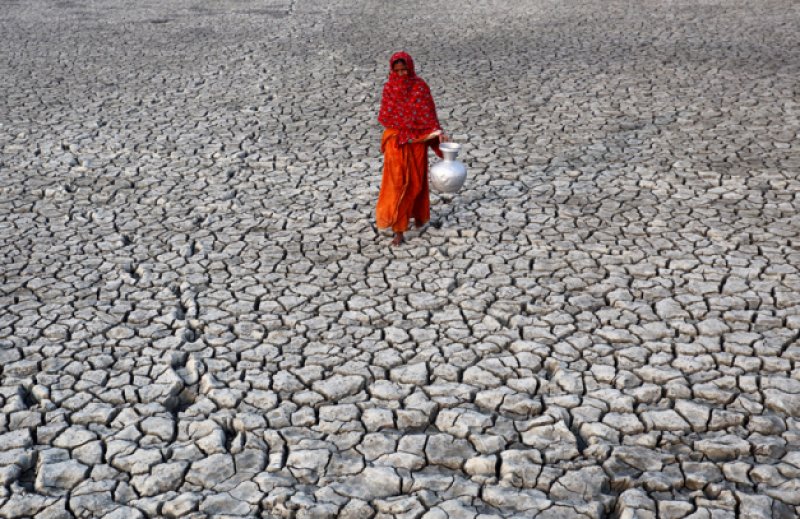Prime Minister Sheikh Hasina has changed Bangladesh’s profile during her three terms in office. The country is ready to shed its tag of least developed country(LDC) by 2026. Yet all this would be in vain if Bangladesh cannot tackle the devastation caused by climate change that has wrecked lives and livelihoods and led to thousands of “climate refugees’’ abandoning their rural homes and migrating to urban Dhaka and other urban centres to eke out a living.
The Global Climate Risk Index (CRI) for 2021, places Bangladesh seventh among ten countries that bore the cumulative impact of climate change between 2000 and 2019. During this time Bangladesh experienced “extreme weather events’’ that cost the country a combined loss of $3.72 billion.
The irony is that Bangladesh is not responsible for any of this. It accounts for a mere 0.56 percent of global emissions yet the price it pays takes a heavy toll on the people. Sheikh Hasina’s government is doing what it must and can, but that is not enough to avert disaster. In fact she received the UN’s environmental award, the Champions of the Earth –in recognition of Bangladesh’s far-reaching initiatives to address climate change. Bangladesh was the first developing country to draw up a coordinated action plan in 2009 called the Climate Change Strategy and Action Plan. She also set up a Climate Change Trust Fund for $300 million through domestic resources from 2009-2012. Every year six to seven percent of the country’s annual budget is earmarked for climate change adaptation.
“Bangladesh has incrementally improved its capacity to adapt to climate change over the last fifteen years. Along the way, it’s developed a model that holds lessons for South Asian peers. It mainstreams climate resilience in its national development programs and supports this with a reasonably sophisticated financial architecture. But equally important is its openness to civil society: NGOs and multilateral organizations compensate for state capacity deficits by bringing technical expertise and fresh approaches drawn from international practice. It doesn’t always work perfectly, but this sort of liveliness in civil society is central to dealing with climate impacts, which requires a real connection with local issues and communities,” says Aditya Pillai of the New Delhi- based Centre for Policy Research.
Yet despite its best efforts, Bangladesh as well as other climate vulnerable countries are in no position to fight this alone. Bangladesh’s geographical location, its flat low lying topography, higher rainfall in the Brahmaputra-Meghna-Ganges river basins, the melting of the Himalayan glaciers leading to rush of water in the monsoons have all contributed to the country’s woes. As if this were not enough, the constantly rising sea levels are making life impossible for coastal communities. This not only results in land loss, but leads to salt water infiltrating agricultural land, hindering farming as well as contaminating drinking water. Drinking this salty, contaminated water can expose populations to health problems like cardiovascular diseases.
While Bangladesh has been successful in reducing the loss of lives from cyclones and floods, helping the affected to recover their livelihoods is not easy. And the projections for the future are alarming.
The World Bank estimates that Bangladesh may have almost 20 million internal climate migrants by 2050 , amounting to almost 12 % of the population. By that date there will be a 50 cm rise in sea level according to experts.
Scientific American describes how “climate change in Bangladesh has started what may become the largest mass migration in human history… Some scientists project a five-to-six foot [sea-level] rise by 2100, which would displace perhaps 50 million people.” The rising sea will inundate the Sundarbans, the mangrove forests that sustain biodiversity and help to protect the coastal villagers from even more massive cyclones.
“The impacts of climate change continue to take a huge economic and social toll on the people of Bangladesh. Studies indicate that globally, costs related to loss and damage from climate change impacts will rise to between $290 billion and $580 billion a year by 2030. The people of Bangladesh are suffering from the greenhouse gas pollution caused by the developed world. It is time the international community stepped up and took responsibility for these impacts,” says Ian Fry, UN Special Rapporteur on the promotion and protection of human rights in the context of climate change. Fry is currently on a visit to Bangladesh.
Bangladesh and other vulnerable countries do not have adequate resources to both fight climate change and provide alternative livelihoods to the affected people. “They’re not just local destitutes. They’re the victims of climate change – not the causes of climate change” Saleemul Huq, director of The International Institute for Climate Change and Development (ICCAD) said in a recent interview. But the problem as Haq points out is that “climate refugees’’ are not recognised under international law. So who takes responsibility for these people forced to abandon their homes for no fault of their own.
It is important for the international community to put their money where their mouth is and draw out a plan for rehabilitating these hapless people. As of today, seven million people in Bangladesh have been forced to leave their homes destroyed either by super cyclones and flooding or because sea water has made the soil in many of the coastal low lying areas .
Despite all soothing assurances by the international community when it comes to loosening purse strings it becomes difficult. At the UN climate summit in Copenhagen in 2009 talk of 100 billion dollars funding by developed nations was initiated. This was reiterated in Paris in 2015. Yet most countries have not paid up.
Vulnerable nations like Bangladesh have been calling for developed countries to provide financial assistance that can help them address loss and damage since the 1990s. But no one paid much heed. The proposal is now gaining some traction. Bangladesh raised it forcefully in the Glasgow Cop 26. Some level of commitment on funding has come from Canada, Denmark, Germany, New Zealand and Scotland. The issue will be taken up again in Egypt this November where the Cop 27 summit is scheduled. Whether the rich countries will bring this to the top of the climate change agenda remains to be seen.

